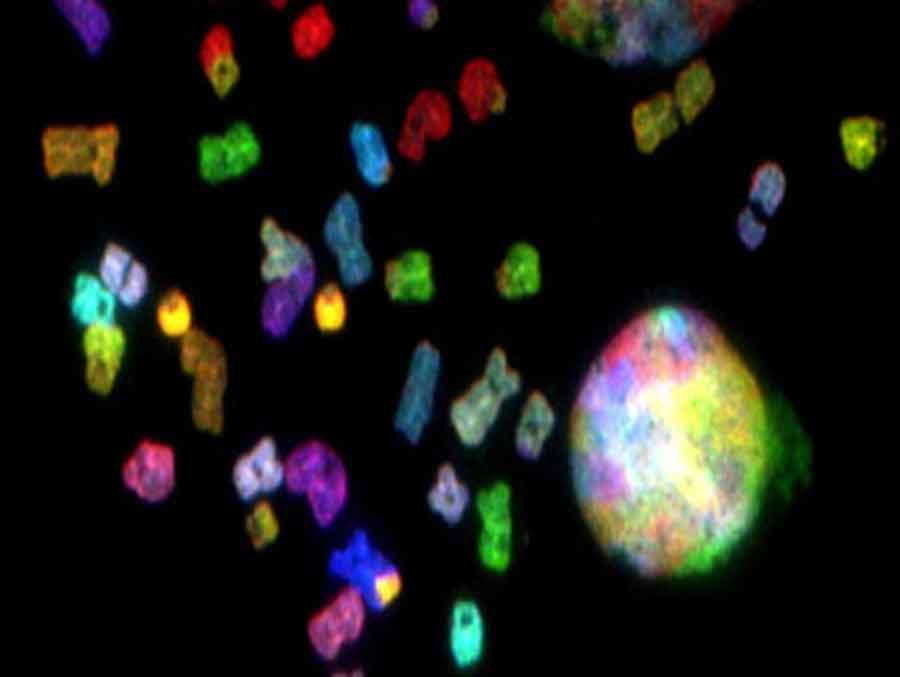Conditional Reprogramming: An Interview with Dr. Richard Schlegel on Growing Cancer Cells
, by NCI Staff
In January, researchers published the complete protocol for a new method of growing normal and tumor cells from patient samples in the laboratory. Known as conditional reprogramming, the technique was first developed in 2012 as a new way to establish cultures of cells and keep them alive indefinitely.
Richard Schlegel, M.D., Ph.D., who directs the Center for Cell Reprogramming at Georgetown University Medical Center, discusses the method, which he co-developed, and how it is being used in cancer research.
What is conditional reprogramming?
Conditional reprogramming (CR) is a cell culture technique that can be used to rapidly and efficiently establish patient-derived cell cultures from both normal and diseased cells, including tumor cells. With this technique, we can grow a million new cells in a week and keep them alive for as long as they are needed. The method can also be applied to animal models, including mouse, rat, ferret, dog, horse, and even fish.
Why is it important to be able to culture cells derived from patients?
Most of the cancer cell lines currently available do not mimic the precise genetic, molecular, and phenotypic changes observed in tumor cells derived from specific patients. Our method is the perfect definition of precision medicine. It allows the expansion of a patient's tumor, thereby making it possible to identify the specific mutations in these cells and to screen the cells for sensitivity to drugs.
How does the method work in practice?
The technique is relatively simple. It involves culturing the cells from patient samples with irradiated mouse cells and a compound known as a Rho kinase (ROCK) inhibitor. Although the CR methodology is relatively straightforward, laboratories that use this technique need to understand how to culture irradiated mouse cells together with the patient’s tumor cells. We have trained nearly 50 laboratories on how to use CR.
Why is the technique called conditional reprogramming?
We called the method conditional reprogramming for two reasons. First, when normal epithelial cells are transferred from standard cell culture medium conditions to CR cell conditions, the cells are rapidly reprogrammed so that they take on the characteristics of adult stem cells, as we reported in 2012. During this process, the cells become less differentiated and begin to divide rapidly.
Second, when cells in CR cultures—which are undifferentiated and stem-like—are transferred to conditions that mimic in vivo environments, they revert to their normal differentiated state and organize into structures similar to the tissue from which they were derived. Therefore, the reprogramming is reversible, or conditional.
What does your new publication include?
The summary we just published in Nature Protocols provides detailed and specific instructions for performing the technique. This updated methodology describes several steps that are critical for achieving successful results, as well as some minor modifications that allow for the growth of non-epithelial cells, such as those of neural, neuroendocrine, endocrine, and mesenchymal origin.
What are some advantages of using conditional reprogramming in cancer research?
The greatest advantage of CR is its rapid and efficient expansion of cell cultures from patient tissue samples. This allows researchers to screen tumors for sensitivity to anticancer drugs or immunotherapies quickly enough for the information to be of clinical use. For example, we used reprogrammed cells to expand a biopsy from a patient’s lung tumor and, within a week, used the cultured cells to identify a successful treatment for the patient.
The technique can also generate large numbers of cells for use in other patient-derived cancer models, such as xenograft models and organoid cultures. Finally, the CR method can be used to expand benign or potentially precancerous lesions from patients, which cannot be achieved with the patient-derived xenograft model. This could help researchers investigate the earliest changes that occur in cancer.
How have cancer researchers used conditional reprogramming to date?
Cancer researchers have primarily focused on two aspects of the method. The first is to grow tumor cells that can be screened for responses to anticancer drugs. The second is for basic science studies to define the genetic, epigenetic, biochemical, and metabolic alterations in tumor cells from cancer patients and animal models.
Are there applications for this approach in the emerging field of precision medicine?
There are definitely exciting possibilities for CR in precision medicine. The method was cited in the Precision Medicine Initiative® in Oncology as a way to develop new laboratory models for research. In addition, CR has been used to identify potential new drug combinations for lung cancer and to identify molecular pathways of resistance to therapies. Currently, researchers are using CR in a clinical trial that is testing individualized therapies for patients with pancreatic cancer.
Are certain types of cancer or normal cells easier to grow than others?
Actually, most tumor cell types can be grown with CR. And with the adaptations we describe in our new paper, tumors of non-epithelial origin—such as neural, neuroendocrine, and stromal—can now be propagated. We have not yet been able to propagate hematologic malignancies, however.
Could the technique be adopted widely right now?
Yes. With this goal in mind, we recently participated in a Cold Spring Harbor Laboratory course that provided students with both didactic and wet lab training in the method. In addition, a number of facilities have been set up recently to use CR to generate new tumor cell cultures, including at the Broad Institute and Duke University.
Finally, NCI recently announced a funding opportunity designed to support the biological comparisons of patient-derived models of cancer. This will fund comprehensive comparisons of next-generation cancer models, including CR cells.
Does conditional reprogramming capture the genetic diversity, or heterogeneity, of tumors?
While the CR technique retains the heterogeneity of cell types from normal tissues, such as the lungs, for example, whether it does so in tumors is not yet known. We do know, however, that the tumor cell cultures retain the specific genetic alterations found in the primary tumor. We expect that future studies will be able to use CR to help identify the spectrum of genetic changes present in isolated tumor cells.
NCI and several other international cancer research organizations are part of the Human Cancer Models Initiative (HCMI), a consortium focused on the development of novel cancer models generated from human tumors. As part of this effort, NCI is providing funding and support to two Cancer Model Development Centers (CMDCs). Some of the cancer models developed by these two CMDC centers will be for rare and pediatric cancers, as well as those more commonly seen in patients from underrepresented populations or for which there have been limited therapeutic advances.

